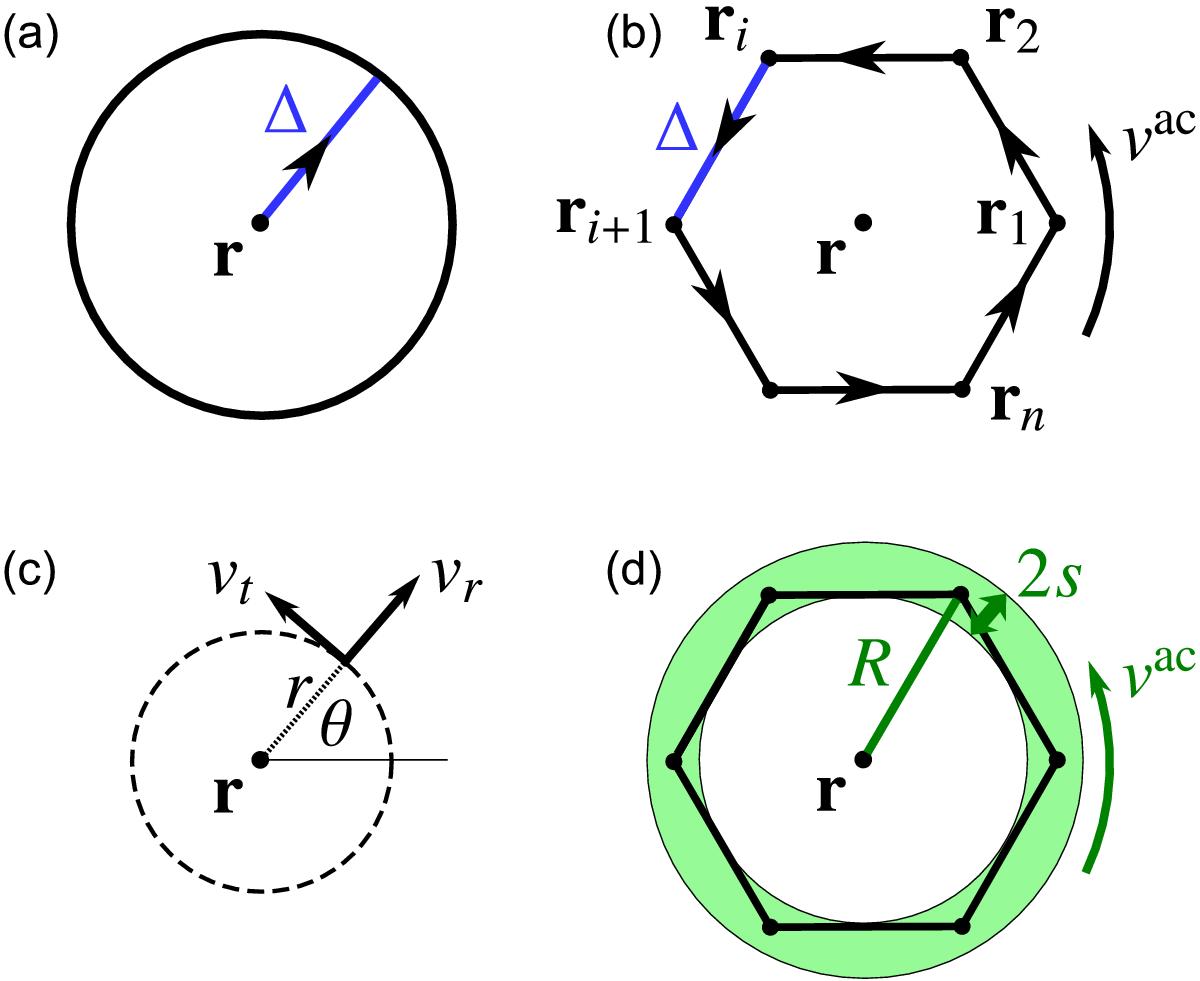Fig. 1

Measurement geometries for divergence- and vorticity-sensitive travel times and LCT velocities. a) The divergence-sensitive travel time τoi is obtained by measuring the travel-time difference between a central point r and a surrounding annulus of radius Δ. b) The vorticity-sensitive travel time τac is obtained by measuring the travel-time differences τdiff between adjacent points along a regular polygon surrounding r. The polygon consists of n points and has edges of length Δ. The points are situated on a circle of radius R = Δ/ [2sin(π/n)]. The travel time τac is the average over the components τdiff (see Eq. (3)). We obtain circulation velocities vac by multiplying τac by a calibration factor. c) From LCT, we obtain the horizontal velocity components vx and vy. Given a reference point r, the LCT velocities can be expressed in 2D polar coordinates (r,θ) by the outward pointing radial velocity component vr and the anticlockwise pointing tangential velocity component vt. d) Using LCT velocities, we approximate vac by averaging the tangential velocity component vt over the annulus shaded in green. The annulus is defined by its radius R and half-width s. We choose R = Δ for n = 6 and s = 2 Mm.
Current usage metrics show cumulative count of Article Views (full-text article views including HTML views, PDF and ePub downloads, according to the available data) and Abstracts Views on Vision4Press platform.
Data correspond to usage on the plateform after 2015. The current usage metrics is available 48-96 hours after online publication and is updated daily on week days.
Initial download of the metrics may take a while.






